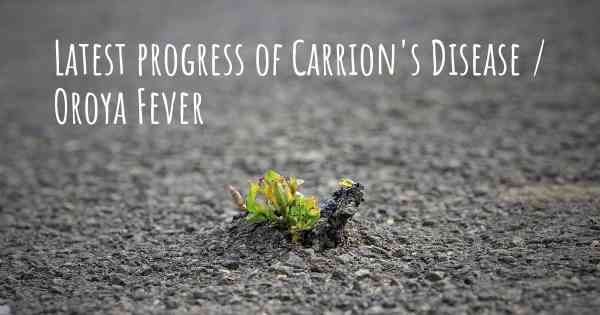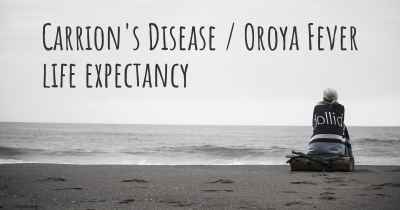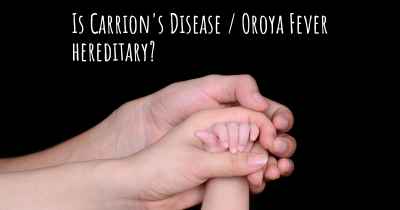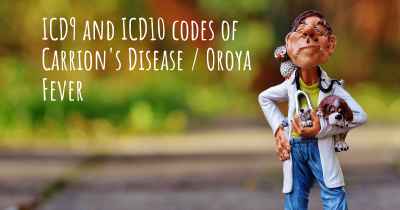What are the latest advances in Carrion's Disease / Oroya Fever?
Here you can see the latest advances and discoveries made regarding Carrion's Disease / Oroya Fever.

Carrion's Disease, also known as Oroya Fever, is a bacterial infection caused by Bartonella bacilliformis. It is primarily found in the Andean regions of South America, particularly in Peru, Ecuador, and Colombia. The disease is transmitted through the bite of infected sandflies, primarily of the genus Lutzomyia.
Over the years, significant progress has been made in understanding and managing Carrion's Disease. Here are some of the latest advances:
1. Improved diagnostic techniques: Early and accurate diagnosis is crucial for effective treatment. Traditional diagnostic methods include microscopic examination of blood smears, which can be time-consuming and may yield false-negative results. However, newer techniques such as polymerase chain reaction (PCR) and serological tests have shown promise in improving diagnostic accuracy and efficiency.
2. Identification of new strains: Recent studies have identified new strains of Bartonella bacilliformis, expanding our knowledge of the genetic diversity of the bacteria. This information is valuable for understanding the disease's epidemiology, transmission patterns, and potential variations in clinical manifestations.
3. Development of targeted therapies: Historically, treatment options for Carrion's Disease have been limited to antibiotics such as streptomycin and doxycycline. However, ongoing research has focused on identifying new drug targets and developing more effective therapies. For example, studies have shown that certain antimicrobial peptides and immunomodulatory agents may have potential in combating the infection.
4. Vector control strategies: Controlling the sandfly population is crucial in preventing the transmission of Carrion's Disease. Recent advances in vector control strategies have shown promise in reducing the prevalence of sandflies. These include the use of insecticide-treated bed nets, indoor residual spraying, and environmental modifications to minimize sandfly breeding sites.
5. Vaccine development: The development of a vaccine against Carrion's Disease remains a significant area of research. While no licensed vaccine is currently available, several experimental vaccines have shown promising results in preclinical studies. These vaccines aim to stimulate the immune system to produce a protective response against Bartonella bacilliformis.
6. Enhanced public health initiatives: Governments and healthcare organizations in endemic regions have been working towards improving public health initiatives to control the spread of Carrion's Disease. These initiatives include raising awareness about the disease, promoting early diagnosis and treatment, and implementing effective vector control measures.
7. Genomic studies: Advances in genomic sequencing technologies have enabled researchers to study the genetic makeup of Bartonella bacilliformis in greater detail. Genomic studies provide insights into the bacteria's virulence factors, antibiotic resistance mechanisms, and potential drug targets. This knowledge can contribute to the development of more targeted and personalized treatment approaches.
In conclusion, ongoing research and advancements in diagnostic techniques, targeted therapies, vector control strategies, vaccine development, public health initiatives, and genomic studies have significantly contributed to our understanding and management of Carrion's Disease. These advances offer hope for improved prevention, diagnosis, and treatment of this potentially life-threatening infection.








